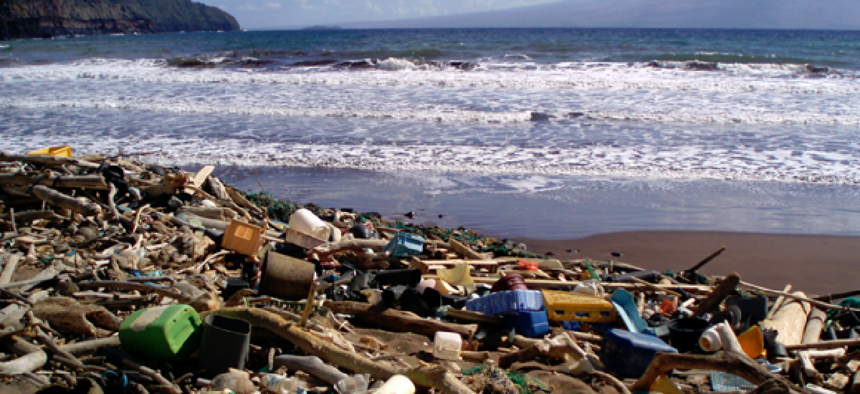Building a marine debris database, one cleanup at a time


Connecting state and local government leaders
With the Marine Debris Tracker app, citizen scientists are helping to clean up the marine environment.
As the recent untangling of a humpback whale off the coast of California illustrated, ocean trash can have serious consequences. And marine debris not only creates hazards for marine life -- it threatens the world’s seafood supply, interferes with commercial fishermen and despoils beaches as well. According to the State Department’s blog, experts estimate that by 2025 there will be a ton of plastic in the ocean for every three tons of fish.
So reporting, tracking and sourcing marine debris – whether it comes from oceanfront litter or natural disasters -- is critical to understanding the causes of ocean pollution and at the heart of fixing it. And the Marine Debris app offers a way to crowdsource the collection of information on debris to the people who regularly walk beaches or who become involved with community beach cleanups.
Created by Jenna Jambeck and Kyle Johnson, both associate professors at the University of Georgia, the app was sparked by an idea that surfaced in 2006, while Jambeck was working at the University of New Hampshire and doing beach clean up with community-based organizations. Back then, the information about the kind of location of debris was collected on data cards, which piled up waiting for data entry.
Jambeck realized that if she could find a way to collect the data electronically, the process would be much more efficient. The first version of the app ran on personal digital assistants that didn’t have wireless capabilities. But when smartphones started becoming popular, Jambeck, who had by then moved on to the University of Georgia, knew she could give her idea an upgrade.
In May 2011, a smartphone app was developed with help from the Southeast Atlantic Marine Debris Initiative, a new regional partnership between the NOAA Marine Debris Program and a consortium of organizations in Georgia, South Carolina and North Carolina that create collaborative regional strategies that address marine debris prevention, reduction and mitigation.
With the app, users can identify the location and type of trash from a list of common debris items found on the beach or in the water. The app records the debris location through GPS and lets users submit the information to the Marine Debris Tracker website. All downloadable and mapped data with GPS coordinates is shown to the public, but stripped on personal information about the data collectors. Top trackers are highlighted, and users can also upload images and share tracking data though social media.
“It can be used anywhere, and it can be used offline -- we specifically made it that way,” Jambeck said. “The first time you open up the program you can download all the lists and all the items, and the next time you open it, you can be completely out of cell and Wi-Fi signal range and the app will still work.”
According to Jambeck, the app gets around 600 hits per day, and 791,000 items have been cleaned up since its release. Trash has been picked up in various parts of the United States, Puerto Rico, Africa and the United Kingdom.
The data collected through the app is available for download from the University of Georgia. “Now that we’re getting to a large enough dataset, we’re looking at the characteristics of the debris and litter that people are finding,” Jambeck said. "We’re starting to collaborate with statisticians to talk about what kind of trends we’re seeing."
Although the app depends on information from people walking the shoreline, the marine debris issue is larger than just litter on the coastlines. “Litter can be blown or washed into waterways that eventually reach the ocean,” Jambeck said. “Protection of our environment is important anywhere.”




